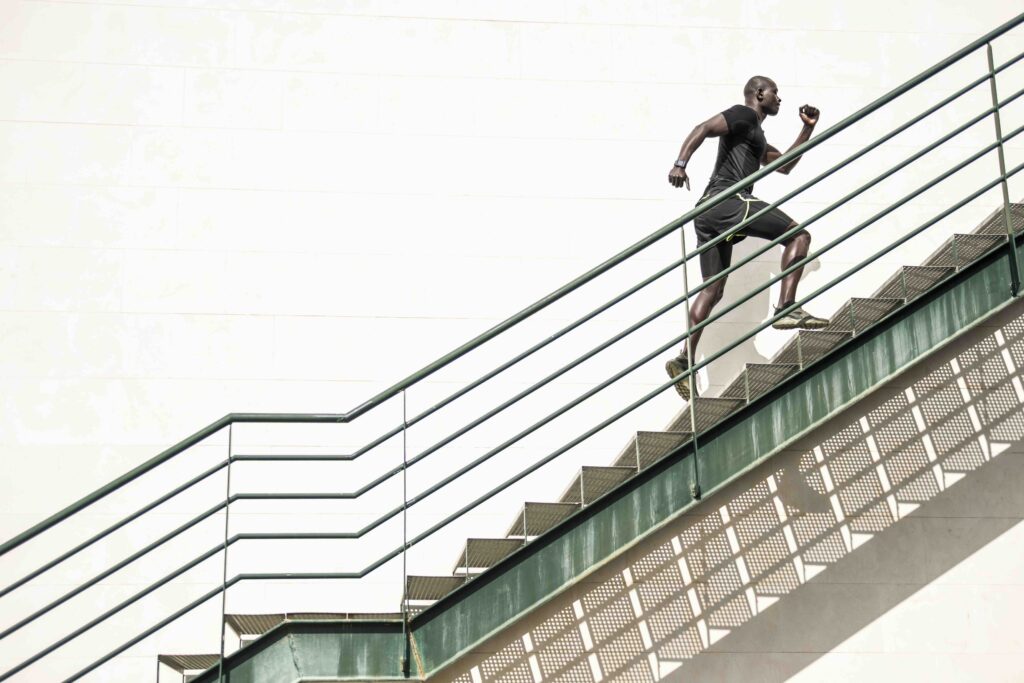With the right cadence to a better runner

More than 600 million people worldwide go running regularly. However, to be more ambitious, you should consider your running style. The cadence is crucial for better performance. Here’s what you need to know about it:
What the running style is composed of
Running style is made up of various factors. These include stride length, time in the air, foot strike, footprint, and other biomechanical influences. Among these biomechanical influences is cadence. This is the number of steps per minute a runner takes during a run. According to several studies, it is the only variable that runners should change to run faster.
Cadence is more important than stride length
However, it is still the case that many runners try to work on their stride length to improve. The problem is that longer strides consume significantly more energy, eventually lacking during longer runs. Studies have also shown that many runners pay attention to their running aesthetics. They want to run like the pros and hope to achieve faster times. They pay particular attention to symmetry. Each foot should land the same way and push off the same way. A study has shown that an exceptionally symmetrical running style does more harm than good.
An asymmetrical running style is perfectly fine
As part of the study, the scientists had top runners cover 10 kilometers on a treadmill. They analyzed gait variability, reaction force, and symmetry of the two legs. The result: most of the athletes exhibited asymmetry. Conclusion of the scientists: It is counterproductive to pay attention to balance and aesthetics.

Run faster with less risk of injury
The situation is different when it comes to cadence. Increasing cadence is the only variable to help reduce the load and save energy. Even the joints benefit because the stress is less. And the running style probably changes for the better. But with positive effects. You can not only run faster and prevent a performance plateau. You also reduce the risk of injury.
How to determine your cadence
Height, weight, leg length, and stride length determine your cadence. Everyday runners usually manage 160 to 170 steps per minute, while top runners manage 180 to 200. To find out what your cadence is, you need to count it. Do it yourself, preferably every other step, or more efficiently with a pedometer. These are available free of charge as an app. Very important for all participating in competitions: You should determine your training and competition cadence.
How to improve your cadence
It’s pretty easy to improve your cadence. But it takes time. Six or, better, eight weeks is what it takes. It would help if you considered that when planning your training and competition. It doesn’t make sense in a competition phase. A great help is a metronome. It shows the given cadence by clicks. If you like to run with music, you should look at JogTunes. There you will find several music pieces in different rhythms.
Visualize the running rhythm
Also helpful is a simple and easy-to-learn meditation technique called Guided Imagery. It is viral with many top athletes. They visualize the desired outcome of a race. Studies have shown that athletes using Guided Imagery can almost identically mimic the actual stress of a race. Once you master the technique, you can simulate a faster cadence and see how well you handle it.
How to improve your stride rate
Of course, the question is how to improve your stride rate. First, scheduling only one training session per week is sufficient. The easiest tip to implement is to focus on your arm work. The faster they swing, the faster the legs work. This is called cross-coordination. Initially, it is advisable to work with slightly smaller and quicker steps. Hill runs or stair runs are also beneficial. Frequency variations are also helpful. During longer runs, it’s best to intersperse sections where you consciously increase the cadence.